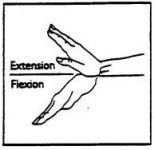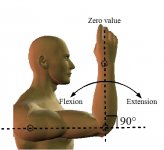The stroke works when you push through the cue ball. I've tried to do it by pulling the cue with a traditional stroke and the control is just not there. The cue ball moves differently after contact with the object ball and the amount of squirt varies too much to be as consistent.
Say what you will, pick apart his non technical posts, but from a mental aspect he has given up a lot of how the game is played. I listen to his descriptions and understand they are not cookie cutter ready for everybody's consumption. They are what he does and feels to get to the top level of the game. It goes without being said that he is not like each and every one of us. Maybe only a handfull will benefit from his teachings. But to deny there is no substance to his information because of incorrect anatomical descriptions is not moving in the right direction.
Sean, and more recently DTL, have made a terrific effort at trying to bridge that gap and actually contribute to the research. We need to move more into the kinesiological descriptions like other sports do to further our knowledge. We're long past the physics arguments and should be thinking about stroke mechanics. Instead of throwing up our hands and calling the people who are trying to understand what CJ is saying, nut huggers and gullible simpletons, why don't we actually give it a chance? CJ has been giving a ton of different examples that make no sense to some, but strike a chord with others. With an open mind a connection may be made with all of us.
I've tried all the suggestions and may use some, none, or all of them. They are subtle and seem to be simplistic when you hear them. Rehashed, reused, recycled, redone, repackaged, reheated...old news. :boring2: But when I put out an effort to see what he was talking about instead of looking down from up high, I found interesting things starting to happen. Things not able to be seen without the practical application of his techniques. And it didn't cost me a dime.
If it doesn't work for you because you're too smart and know how to swim without jumping into the water, I say, who is really misleading others in these threads? CJ, who is actively participating and communicating about a physical method to improve one's game, or the guy that sits back and tells everyone it's BS because they just know so or couldn't get it to work?
The triceps and biceps split duty on this push stroke. The shoulder complex and pecs get involved, too. This locking of the wrist engages all the muscles and connects the foream to the hand without unwanted sideway movements. I push forward rather than pull the cue. I break my wrist and allow my fingers to propel the cue forward sharply.
Now that I'm becoming familiar with this stroke, I realize there are many pros who push the cue stick, rather than pull the cue through. Dallas West pulls the cue, Efren pushes it. Earl is about 50/50 since he came back from the PI. SVB went there, too and now pushes most of his shots. I pulled, now I push. I ran a 4 pack and then a 3 pack last night on a tight 9 footer. A pro friend is trying out the same stroke and ran a 5 pack playing 8 ball. Individual results, but you decide what's right for you. I've made my decision.
Best,
Mike

